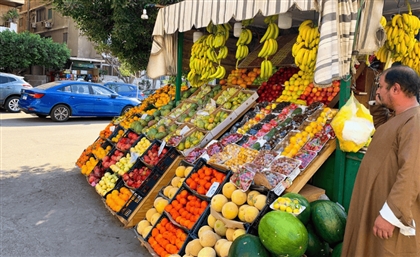Egyptian Exports Rise 6.5% to USD 45.3 Billion in 2024
Finished goods made up 54.1% of exports. Saudi Arabia was the top market at USD 3.5 billion, followed by Turkey at USD 3.4 billion and the UAE at USD 3.3 billion.

Egypt’s total exports rose 6.5% to USD 45.3 billion in 2024, up from USD 42.6 billion in 2023. Data from the Central Agency for Public Mobilisation and Statistics shows that non-oil exports were the main driver, increasing 14.4% to USD 39.9 billion, while petroleum and electricity exports fell 29.1% to USD 5.5 billion. Finished goods accounted for 54.1% of exports, with semi-finished goods at 23.2% and raw materials at 11.2%. Amongst leading items, gold and platinum-coated raw forms reached USD 3.2 billion, up 77.7%. Ready-made garments rose 17.2% to USD 2.8 billion, plastics and plastic products increased 27.3% to USD 2.3 billion, iron and iron products grew 4.4% to USD 2.3 billion, and insulated electrical wires and cables climbed 23.6% to USD 1.4 billion. Saudi Arabia was the top destination, receiving 7.7% of total exports as shipments rose 31.1% to USD 3.5 billion. Turkey ranked second with a 7.6% share, with exports down 6% to USD 3.4 billion. The United Arab Emirates came third at 7.2%, with exports up 47.5% to USD 3.3 billion. Italy followed with 7.1%, with exports down 1.5% to USD 3.2 billion. By economic bloc, Arab countries received 36.2% of Egypt’s exports, Western Europe 25.9%, and Eastern Europe 18.1%. Imports rose 13.2% to USD 95.3 billion in 2024 from USD 84.2 billion in 2023. Non-oil imports increased 9.2% to USD 79.2 billion, while petroleum imports rose 38.3% to USD 16.1 billion. Intermediate goods made up 35.8% of imports, followed by fuel at 17.3%, non-durable consumer goods at 16%, and investment goods at 14.6%. Imports of corn fell 8.5% to USD 2.3 billion, wood and wood products declined 2.4% to USD 1.2 billion, and crude oil imports dropped 50.5% to USD 0.9 billion. China remained the primary source of imports at 16.5% of the total, with shipments up 18.7% to USD 15.7 billion. By port, Alexandria handled 22.1% of imports, followed by Cairo International Airport at 20.8%, Ain Sokhna at 12.3%, Dekheila at 11.7%, Damietta at 10.9%, and Suez at 9.9%.
- Previous Article ‘Love Is Blind: Habibi’ Earns International Emmy Nomination
- Next Article The 10 Most Wanted Bags Right Now



























